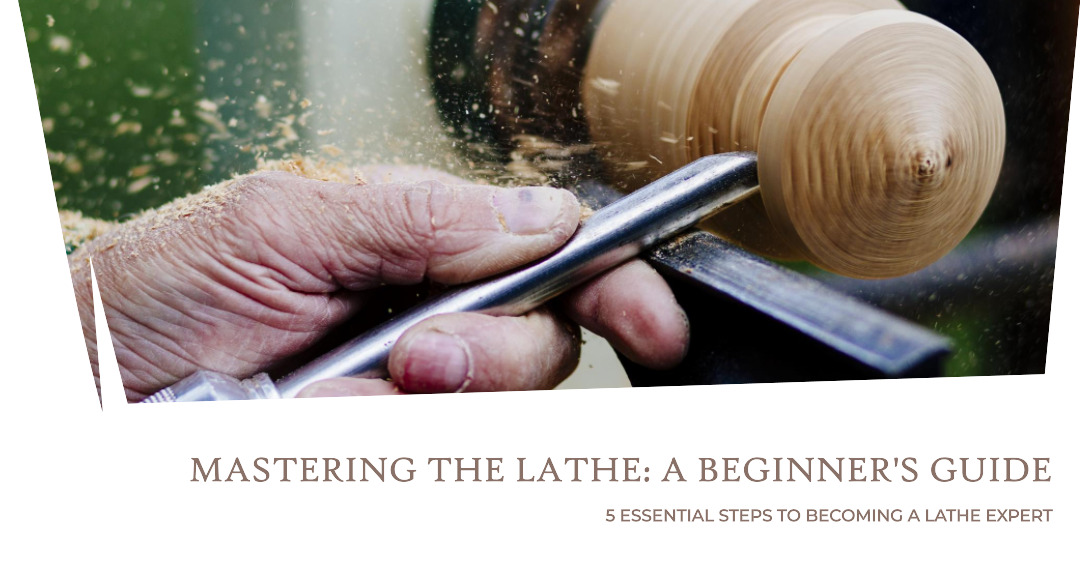The lathe is an essential tool for any aspiring woodworker or metalworker. It allows you to shape, cut, and drill various materials with precision. However, mastering the lathe can be a daunting task for beginners. In this guide, we will provide you with five essential steps that will help you become proficient in using the lathe.
Step 1: Understand the Lathe and Its Components
Before you can start using the lathe, it's crucial to familiarize yourself with its various components. The main parts of a lathe include the headstock, tailstock, bed, tool rest, and the motor. Each component plays a vital role in the lathe's operation and functionality.
-
Headstock: The headstock is located at the left end of the lathe bed and holds the spindle, which rotates the workpiece.
-
Tailstock: The tailstock is positioned at the right end of the bed and provides support to the workpiece.
-
Bed: The bed is the horizontal base of the lathe, which provides stability and supports the various components.
-
Tool Rest: The tool rest is an adjustable support that holds the cutting tool for precise cutting and shaping.
-
Motor: The motor powers the lathe and controls the speed of the spindle.
Step 2: Learn Basic Lathe Safety Measures
Safety should always be a top priority when working with any power tool, and the lathe is no exception. Here are some essential safety measures to keep in mind:
-
Wear Protective Gear: Always wear safety goggles, a face shield, and appropriate clothing to protect yourself from flying debris.
-
Secure the Workpiece: Make sure the workpiece is securely fastened to prevent it from coming loose during operation.
-
Use Proper Technique: Keep your fingers and hands away from the rotating parts. Always use the tool rest and handles to maneuver the workpiece.
-
Avoid Loose Clothing and Jewelry: Loose clothing or jewelry can get caught in the lathe's moving parts, so it's best to remove them before starting.
Step 3: Master Lathe Tools and Cutting Techniques
To effectively use the lathe, you need to understand the different cutting tools and techniques. Here are some essential tools commonly used in lathe work:
-
Gouges: Gouges are versatile tools used for roughing, shaping, and detailing. They come in various shapes and sizes, including spindle gouges, bowl gouges, and roughing gouges.
-
Parting Tools: Parting tools are used to cut off sections of the workpiece or create grooves. They have a narrow blade that allows for precise cuts.
-
Skew Chisels: Skew chisels have a flat, angled blade that is ideal for creating smooth finishes and precise cuts.
-
Bowl and Spindle Scrapers: Scrapers are used for refining shapes and removing imperfections from the workpiece's surface.
Practice different cutting techniques, such as peeling cuts, planing cuts, scraping cuts, and shearing cuts, to develop your skills and achieve desired results.
Step 4: Experiment with Various Lathe Operations
To enhance your lathe skills, it's important to experiment with different operations. Here are some common lathe operations you can try:
-
Turning: Turning is the process of shaping a workpiece by rotating it against a cutting tool. It allows you to create cylindrical shapes, such as table legs, handles, or bowls.
-
Facing: Facing involves cutting a workpiece's end to make it flat and square. This operation is commonly used when preparing the workpiece for additional operations.
-
Drilling: Lathe drilling allows you to create holes in the workpiece with precision. Use a drill chuck mounted on the tailstock for drilling operations.
-
Thread Cutting: Thread cutting enables you to create threads on a workpiece. You can use a threading tool or a thread-cutting attachment for this operation.
Step 5: Practice and Seek Guidance
As with any skill, practice is key to mastering the lathe. Dedicate regular time for practice and try different projects to broaden your experience. Additionally, seeking guidance and learning from experienced woodworkers or metalworkers can greatly accelerate your progress. Joining local woodworking or metalworking clubs or attending workshops can provide valuable insights and tips.
Remember, mastering the lathe takes time and patience. By following these essential steps, dedicating yourself to practice, and constantly seeking improvement, you will gradually become proficient in using the lathe and unleash your creativity in woodworking or metalworking projects.
Note: This article is provided in markdown format for your convenience:
#
## Step 1: Understand the Lathe and Its Components
## Step 2: Learn Basic Lathe Safety Measures
## Step 3: Master Lathe Tools and Cutting Techniques
## Step 4: Experiment with Various Lathe Operations
## Step 5: Practice and Seek Guidance
FAQ
Q: What are the main components of a lathe?
A: The main components of a lathe include the headstock, tailstock, bed, tool rest, and motor.
Q: What safety measures should I follow when using a lathe?
A: Some essential safety measures to follow when using a lathe include wearing protective gear, securing the workpiece, using proper technique, and avoiding loose clothing and jewelry.
Q: What are some essential lathe tools?
A: Some essential lathe tools include gouges, parting tools, and skew chisels.
Q: What is the purpose of a tool rest?
A: The tool rest is an adjustable support that holds the cutting tool for precise cutting and shaping.

